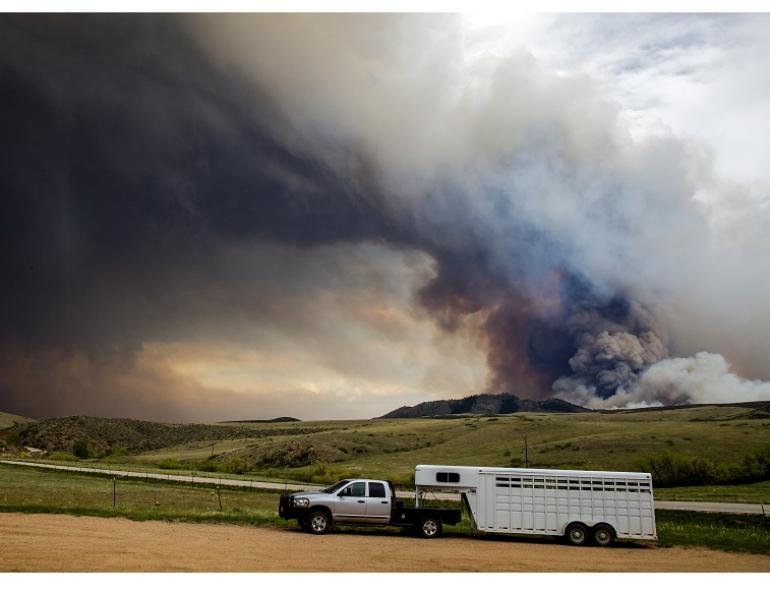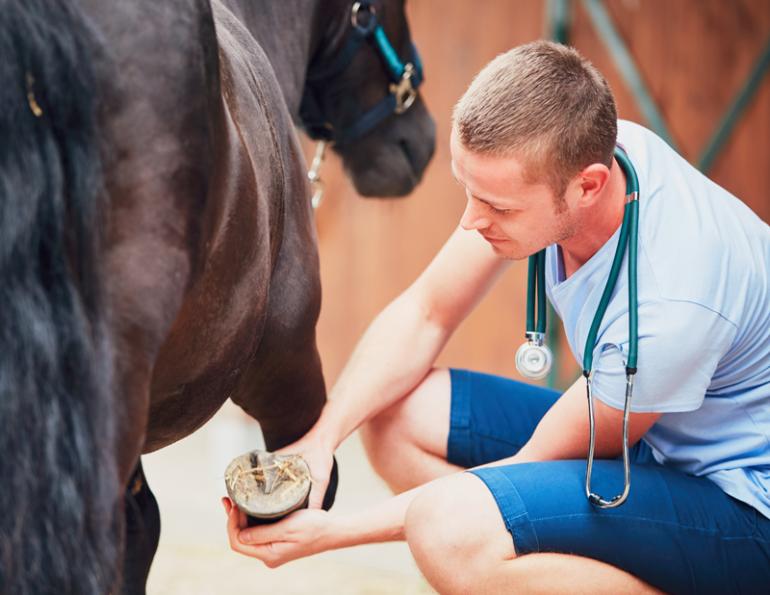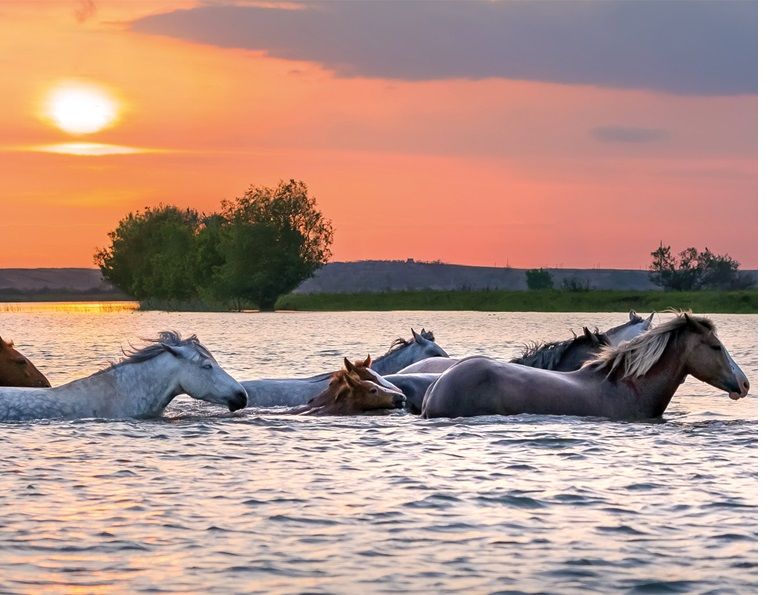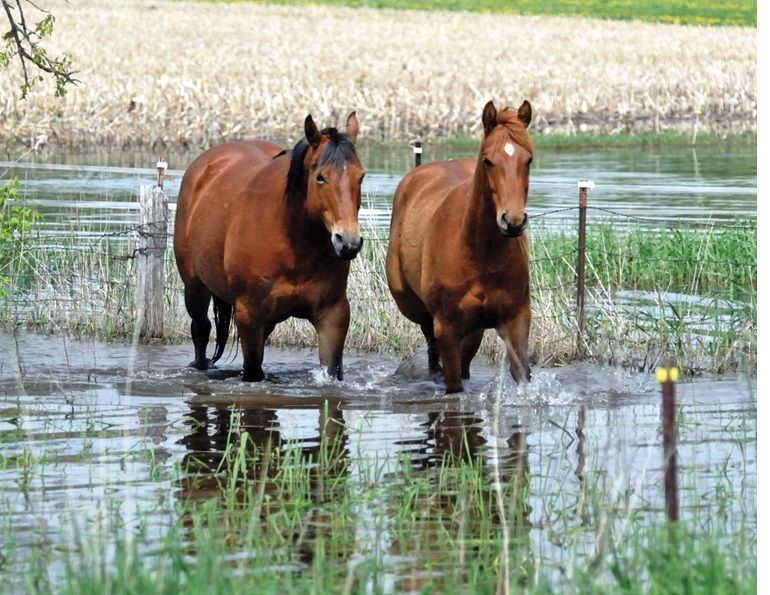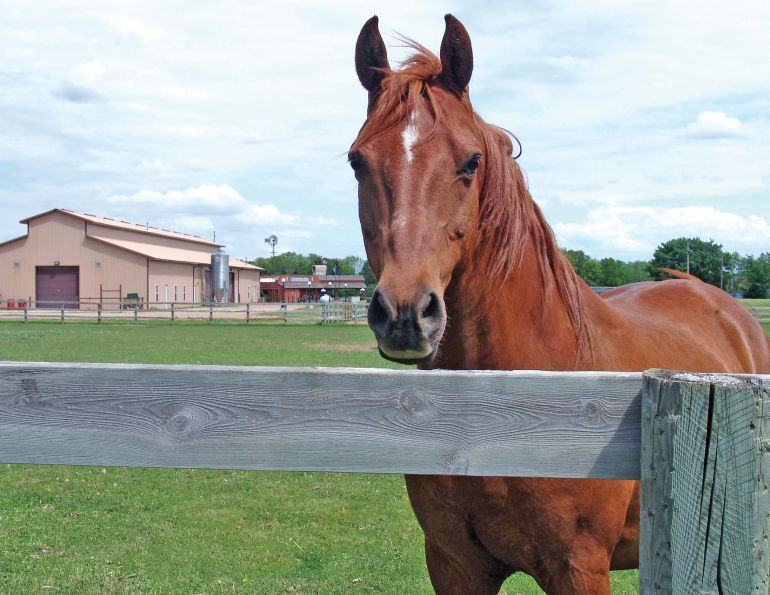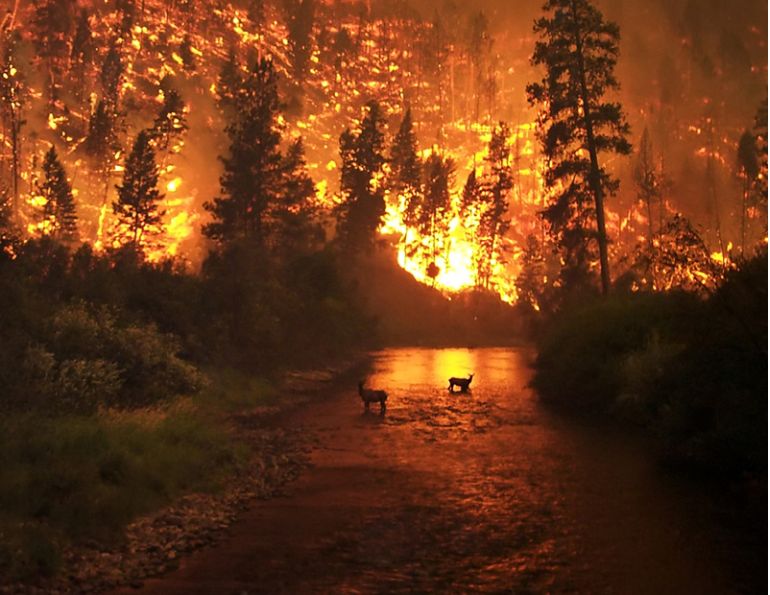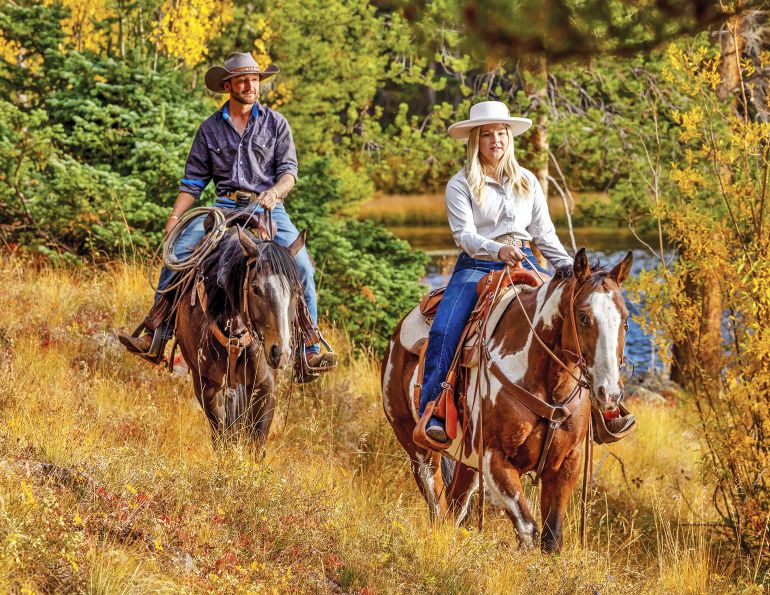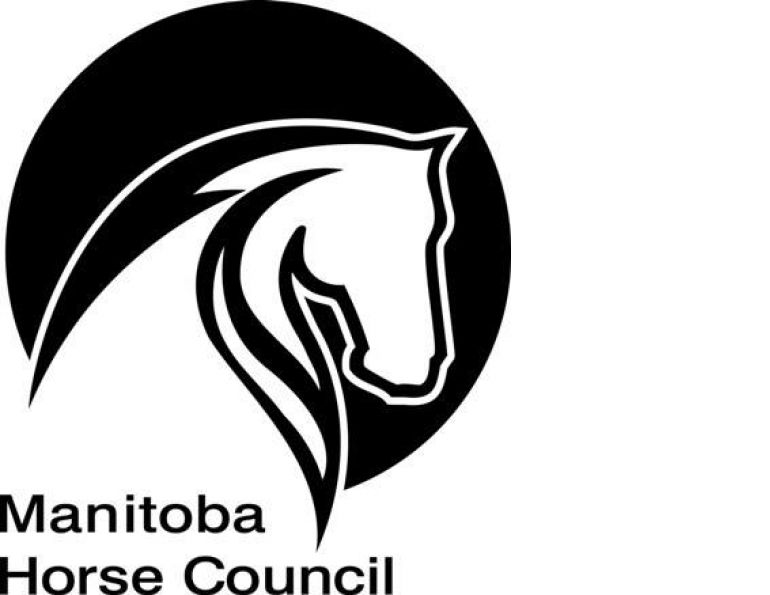Equine Guelph
While one can’t plan for every form of disaster, it’s important to familiarize yourself with any potential risks that could occur in your area and plan for them accordingly. Planning ahead can allow horse owners the opportunity to stay composed and act quickly in an emergency situation.
- Survey your property and map out the location of all dwellings and animal barns, along with the number and type of livestock.
- Outline and practice emergency evacuation/fire escape plans (emergency action plans) and ensure that evacuation routes include containment areas for any evacuated animals.
- Provide your emergency action plans in a prominent location (e.g., a whiteboard) and confirm individuals to assist if needed, especially if you are unable to get to your property.
- Keep an up-to-date emergency contact list, which would also include individuals who would be able to assist with transporting and sheltering your horses.
- Ensure that your address (fire number) is prominently displayed and visible from both directions for emergency responders.
- Make sure that all your horses have some form of identification (e.g., livestock markers, etc.).
- Photograph your horses from all angles and keep three printed copies — one in barn in waterproof pouch/Ziploc® bag), one with you, and one off-site.
- Safely store a two-week supply of feed/hay (with feeding instructions) and ensure a minimum three-day supply of water is stored in covered containers.
- Store any medications and supplements in an airtight, waterproof container. Always read labels and store at appropriate temperatures.
- Assemble and maintain an equine emergency care kit that includes Vetrap, bandages, medications (stored at correct temperature), flashlights, batteries, etc., and keep it with up-to-date records of your horse’s vaccinations, medications, and any health issues.
- Make sure that the insurance coverage on your property and horses is up-to-date.
Around the Barn:
- Post emergency phone numbers in a prominent location in your barn.
- Keep at least one well-maintained generator on-site and have enough fuel to keep it running for several days.
- Familiarize yourself with the location and operation of all emergency shutoff valves and containment measures, and be sure that information is readily available to responders.
- Keep all hazardous material labeled and secured in a safe place.
- Check wiring to ensure it is safe, in good condition, and not a fire hazard.
- Make sure all doors and gates are working properly and can be opened or shut in an emergency situation.
- Make sure your laneways and gates to paddocks are large enough that emergency vehicles such as a fire truck can access your property.
- Keep all fire extinguishers fully charged and easily accessible for immediate use.
- Always keep a sufficient number of halters and lead ropes for every horse on the property ready and easily accessible.
- Have designated areas to keep flashlights, first-aid kits, etc.
- When in doubt, consult with your local fire department for advice on how to effectively keep your horses safe on the farm.
Related: Barn Safety Tips: Plan Ahead to Improve Your Chances of a Positive Outcome
Related: Equine Emergency Preparedness for Horses
Published with the kind permission of Equine Guelph.
Photo: In the event of a large-scale disaster, plan how you will get your horses out and where you will take them. If you are ever faced with an evacuation alert, GET OUT — RIGHT NOW. DO NOT WAIT for an alert to become an order. Photo: AdobeStock/JSNewtonian



